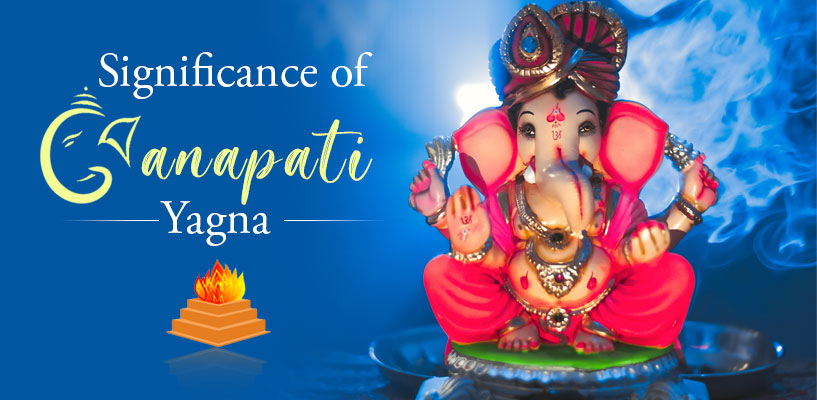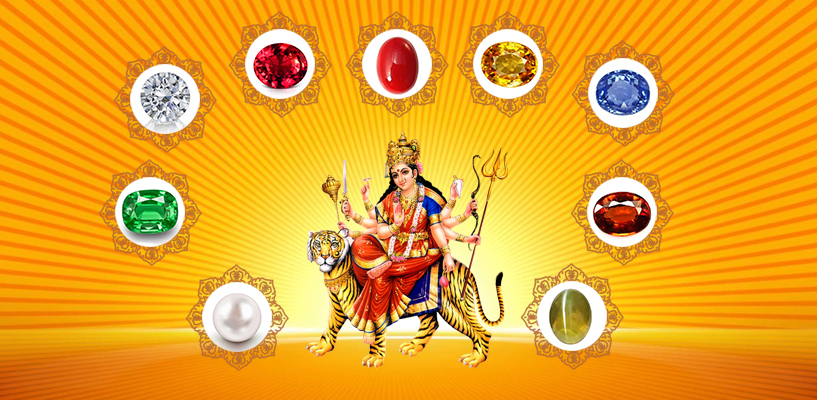Significance of Ganapati Yagna
Why and how is Ganapati Yagna performed? What are its benefits? What is the science behind this Yagna? Find answers in the article.
Ganapati yagna is a traditional ritual dedicated to Lord Ganesha to seek his blessings and to remove obstacles in our life. People also perform this yagna before entering into a new house enterprise or business. Lord Ganesha is known by three names: Riddhi – Prosperity, Siddhi – Success, Buddhi – Wisdom and Intelligence. The fire is the medium through which the formless energy assumes the form of the matter to get back to their state and to give us divine blessings.
The fire is the symbolic mouth of all Gods and it empowers various Gods and deities with divinity and makes them more powerful. Oblations are offered with invocation of the name of the particular deity along with incantations of Vedic mantras by priests. The yagnas are begetters of long life, health, offspring, happiness, prosperity, rains, and knowledge.
Lord Ganapati
Ganapati is the head of all the ‘ganas’, is the lord of the people. He is the chief of the goblin hosts of Lord Shiva. The elephant-headed Hindu God is traditionally worshipped before any major event to remove and overcome the obstacles. He is also worshipped as a principal deity in both Jainism and Buddhism. Ganesha’s mercy is regularly invoked by those who chant the mantra, Om Gam Ganapataye Namaha - which means, ‘I offer my obeisance to Ganesha, the remover of obstacles.’
Benefits of Ganapati Yagna
- You will get rid of all obstacles and hindrances in your profession and personal life.
- Lord Ganesha will grant you wealth, prosperity, good health, and happiness in your life. As Lord Ganesha governs Mooladhar chakra, which governs prosperity, your life will be filled with divine blessings.
- Lord Ganesha is the gatekeeper or dwarpal of Sushumna Nadi which is connected to Mooladhar chakra. Hence, by performing this homam / yagna you will achieve spiritual growth.
- The Ganapati homam also helps in removing health and psychological issues like anxiety, brain related problems, injuries through accidents, etc.
- Worshipping Lord Ganesha ensures success and helps in winning over enemies.
Science behind Ganapati Yagna
Every ritual has two significances:
- Cosmic: Includes the manipulation of certain deities and nature towards us.
- Individual: Development of Self.
This process includes all the five senses and their respective ingredients which are means and causes of our misalignment with nature, which causes suffering.
Chanting and reciting of Mantras and Vedas are connected with sound, incense and other aromas used during this yagna, which in turn is connected with - smell, touch via the ritualistic gestures, food is the sense of taste, the mind is ready to surrender the ego and transcend into higher realms through communion with the deity.
Nasal drug delivery is the most recommended medicine to ward off brain related issues, for mental peace and well-being. Havan is an ancient technique to fight diseases of the brain. The components of Havan contain volatile oils which get evaporated in the high temperature of fire and the vapours of these oils enter our central nervous system through the nasal route. From ancient times, smoke produced by different herbs is used to cure diseases, specially mental disorders. The sublimated herbs and other Havan ingredients when inhaled, first reach the brain, followed by lungs and other subtle components of the body. Thus, it has healing capacity. This has been observed to be the most effective method of administering medicine to reach every single cell of the body. Further the substances used in yagna is vaporized and distributed into the entire surrounding where the yagna is performed.
Havans are also prevalent in Buddhism and Jainism. However, the procedures and offerings vary with regard to occasions, ceremony and culture. In Havan, medicinal herbs are used, the Havan Kund is prepared in specific shape and size to ensure beneficial uses. These herbs, when offered in high temperature, release phytochemicals. The decomposition and transformation of gaseous substance in the fire is a scientific method of subtilization of matter into energy and creates high electromagnetic waves thereby in communion with Vedic mantra chanting which helps in transmitting the desired benefits of yagya in the surrounding atmosphere and far beyond.
Havan seems to have been designed by ancient scholars to fight diseases of the brain. Besides faith and beleifs, Havan has a therapeutic effect on us and our environment and has been designed for multifaceted action to clean surroundings as well as to cleanse the toxins responsible for causing diseases. It also assures benefits for physical, emotional, mental, and spiritual development.
Who should perform Ganapati Yagna?
- The purpose of Ganapati Homam is to remove obstacles in any venture.
- People seeking success in business, work life, student life and marital life.
- Housewarming, Naamkaran and before starting of any yagna.
- People who are under the influence of Ketu Dosha. Ganesha is the planetary overlord of Ketu and he also governs our Mooladhar chakra.
One should seek Lord Ganesha’s blessings to remove the malefic effects of these doshas.
Materials required for this Yagna
We do not recommend a readymade Havan Kund. One can make one with the following materials - the basic material is bricks, sand, cow ghee, modhaka, coconut, puffed rice, honey, and five fruits to make panchamrit. The poornahuti ingredients are coconut, banana, sugarcane, honey, ghee, modhak, jiggery, puffed rice, and havis (cooked rice).
Additional materials: karpoor, kumkum, banana leaf, sandalwood paste, kalash, haldi, flowers, rangoli powder, silver vessels for astadravyam, dhruva, and other important items as per the priest’s guidance.
Procedure for Ganapati Yagna
Sankashti Chaturthi of every month, Vinayaka Chaturthi and auspicious days as per muhurta are considered good days to perform the Ganapati Yagna.
- Anjuna: Mantra seeking Lord Ganesha’s permission to perform this yagna without any hindrances.
- Aachamanam: The procedure is to sip the holy water through Mantras to purify your body.
- Vigneshwara Pooja: It involves worshipping Lord Ganesha, requesting Him to give the courage to fulfil this yagna without any obstacles.
- Pranayamam and Sankalpam: Purification of your breath and taking a vow to please Lord Ganesha.
- Kalasa Shuddhi: One has to fill the kalash with water and during the process of yagna this water will be consecrated with divine energies.
The priest then sprinkles this blessed water throughout the house and on everybody. - Agni Prathistahapana: The Havan Kund is started by chanting Agni Mantra and pouring the fire into the Havan Kund.
- Dikpaala Pooja: It is performed along with Panchopachara pooja wherein the priest pours the preliminary offerings into the Havan Kund with the invocation of the God. Then he chants Mool Mantra of Ganesha and other several Mantras by offering Ahuti in the Havan Kund. The Ahuti symbolises food for the Divine God.
- Poornahuti: It is the most important ritual in all yagna wherein all the family members and concerned person should be present in front of the Kund. The priest will put important ingredient in a piece of cloth, tie it and offer it to the Havan Kund by dipping the cloth in ghee.
- Udhvasanam: Concluding the ritual by chanting prayers and seeking Lord Ganesha’s blessings.
2026 Horoscope Reports
Translate





.jpg) Lord Rama's Horoscope
Lord Rama's Horoscope
 Namkaran Is the Hindu Naming Ceremony of a Newborn child
Namkaran Is the Hindu Naming Ceremony of a Newborn child
 The Auspicious Nine Gemstones For the Divine Nine Deities of Navratri
The Auspicious Nine Gemstones For the Divine Nine Deities of Navratri
 Adhik Maas - Spiritually The Most Powerful and Religious Month!
Adhik Maas - Spiritually The Most Powerful and Religious Month!
 Karwa Chauth, 10 Oct 2025: Significance & Puja Details
Karwa Chauth, 10 Oct 2025: Significance & Puja Details
